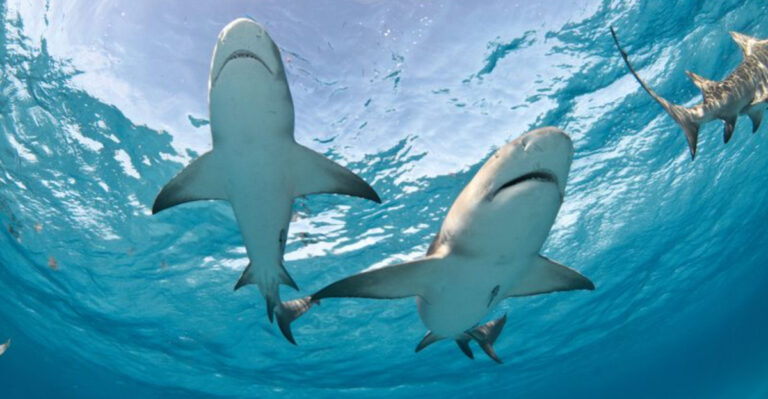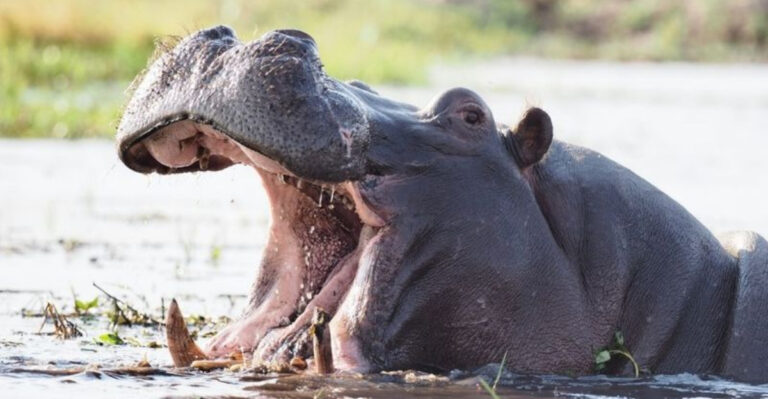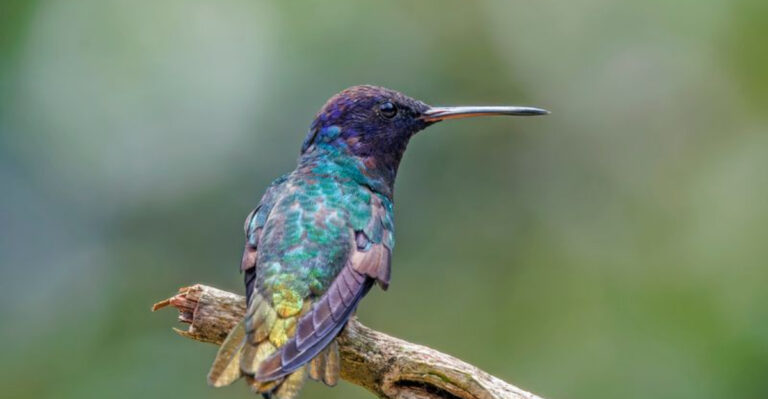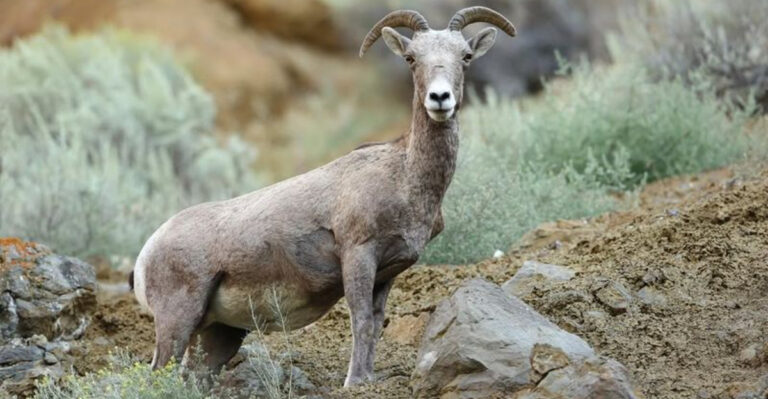15 Unexpected Things Spiders Actually Eat
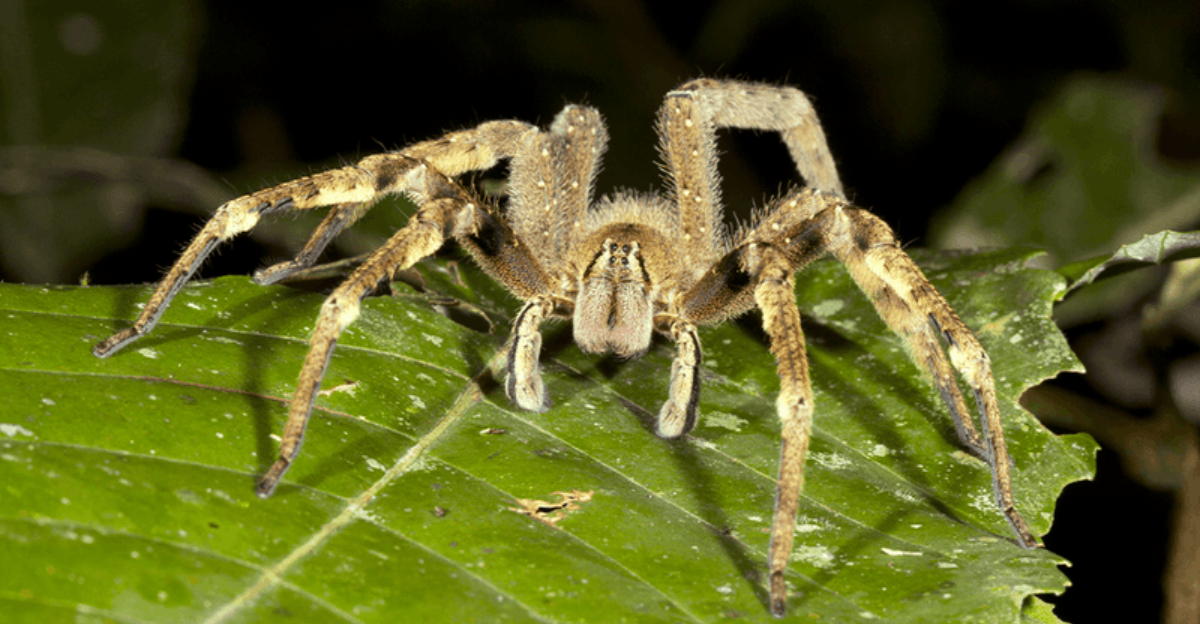
When you think of spiders, you probably picture them catching flies in intricate webs. But these eight-legged hunters have surprisingly diverse dining preferences that go way beyond the usual bugs we imagine. From unusual prey to downright shocking meals, spiders have eating habits that might make you look at these creatures in a whole new light.
1. Fish Out Of Luck
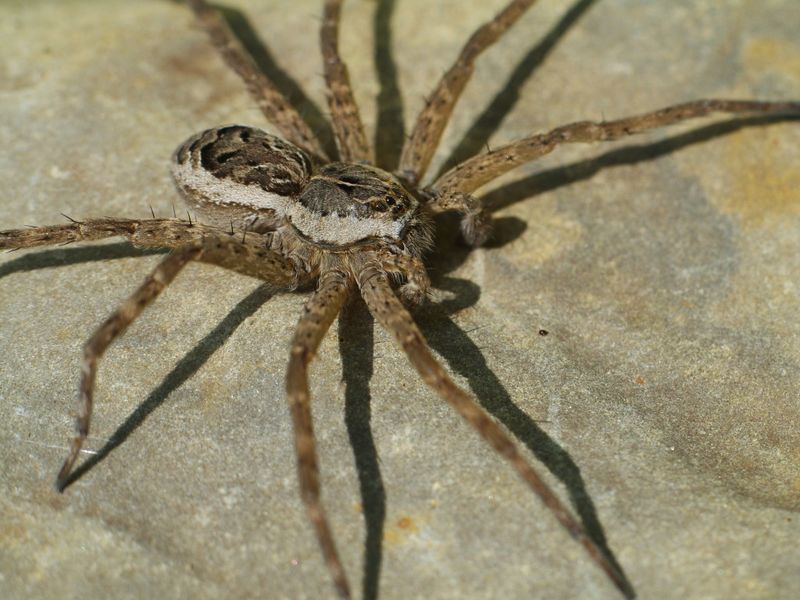
Believe it or not, some fishing spiders can catch small fish! Perched at the water’s edge, they detect vibrations with their sensitive legs.
When a fish swims near the surface, these ambitious arachnids dash across the water, grab their prey, and inject venom. They’ll then drag their catch to dry land for a leisurely seafood dinner.
2. Slithery Snacks
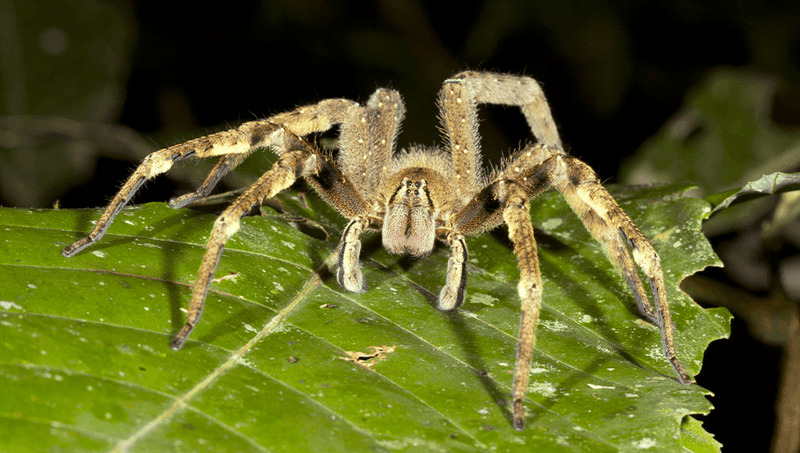
Tiny snakes sometimes end up on the menu for larger spiders. The Brazilian wandering spider and certain tarantulas have been documented taking down serpents several times their length.
Using potent venom and strong silk, they immobilize these reptiles before the snake knows what hit it. Talk about turning the tables on a fellow predator!
3. Bat Buffet
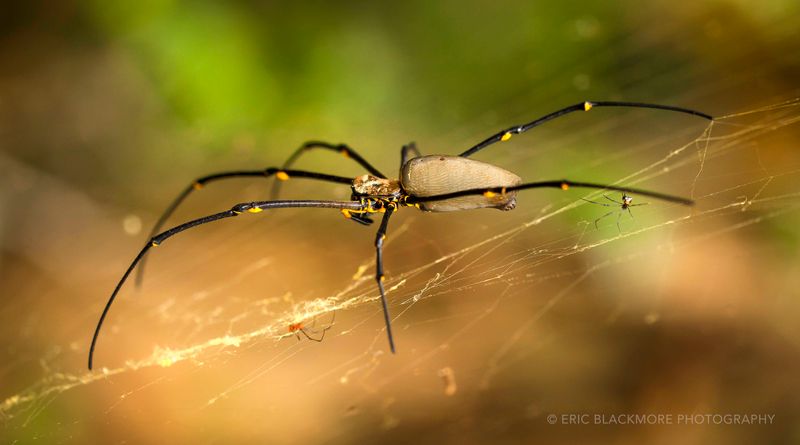
Golden orb-weaver spiders spin webs strong enough to catch bats mid-flight! These super-sized webs can span several feet across forest clearings or caves.
When an unsuspecting bat flies into this sticky trap, the spider rushes over, wraps it in silk, and delivers a venomous bite. Who needs bugs when you can feast on flying mammals?
4. Feathered Feast
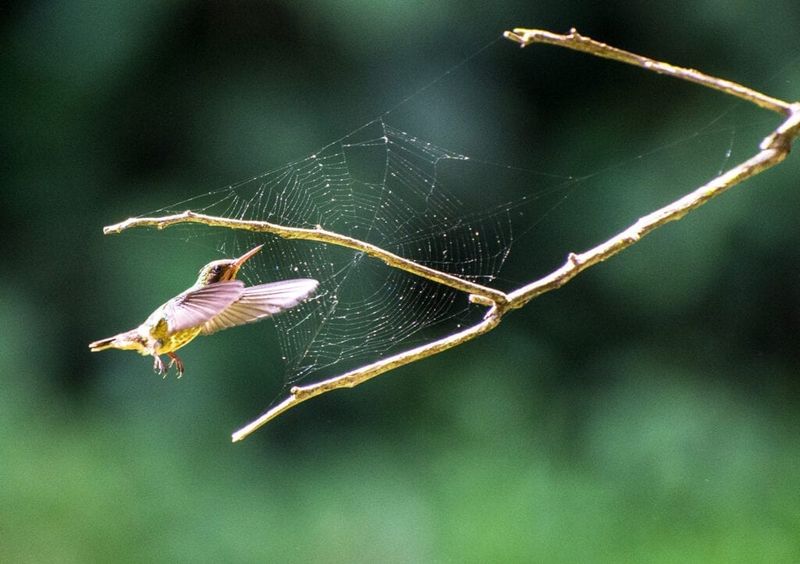
Tiny hummingbirds occasionally fall victim to giant orb-weaver spiders in tropical regions. Their ultra-strong silk can entangle these fast-flying birds when they accidentally zoom into the wrong place.
The spider quickly wraps the bird in silk before it can escape. Though rare, these encounters demonstrate just how formidable spider silk really is!
5. Lizard Lunch
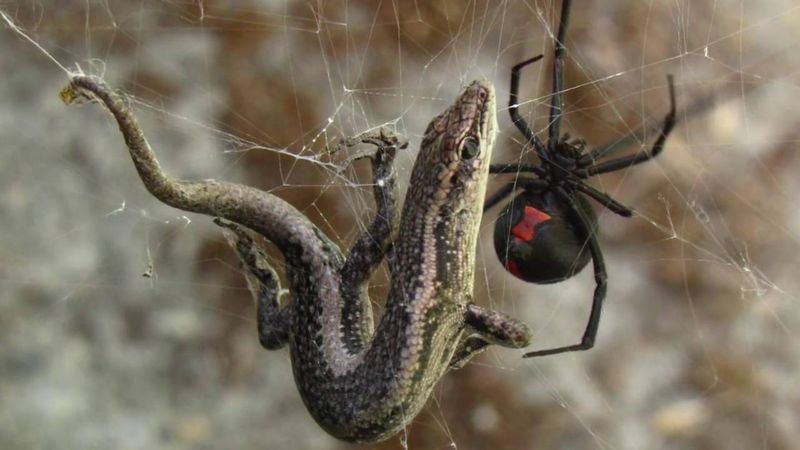
A shocking sight awaits anyone who spots a huntsman spider enjoying a lizard snack. These speedy arachnids don’t use webs but instead rely on pure speed and power.
They chase down small lizards, pounce with precision, and inject venom that quickly subdues their reptilian prey. Their strong jaws then make quick work of what would seem an impossible meal.
6. Mosquito Munching Plants
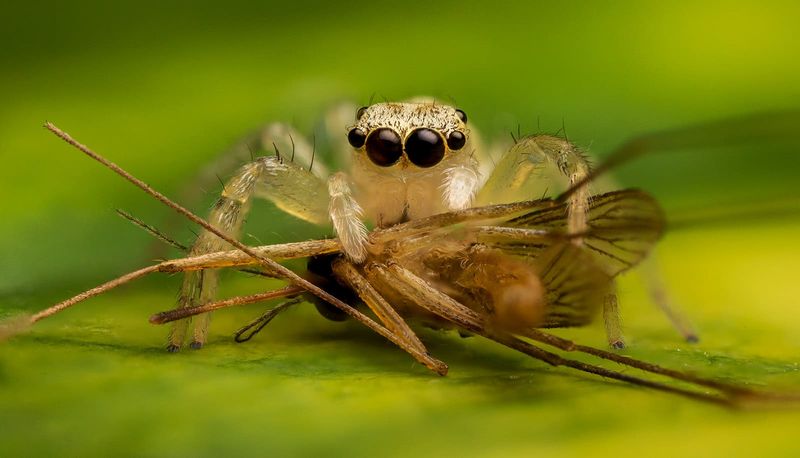
Jumping spiders have been observed stealing insects from carnivorous plants! These clever little hunters will boldly venture onto pitcher plants or Venus flytraps.
They snatch trapped mosquitoes and flies before the plant can digest them. It’s like spider takeout – letting the plant do the catching while they enjoy the meal without any work!
7. Spider-Eat-Spider World
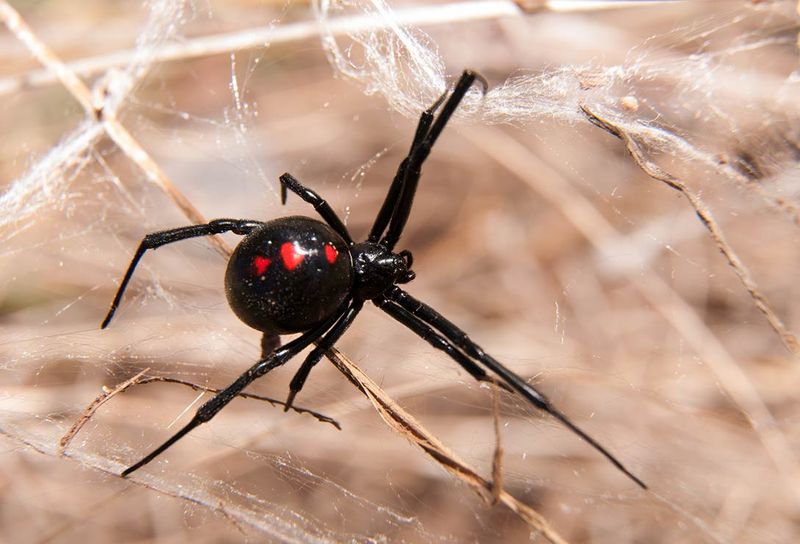
Cannibalism is surprisingly common in the spider world. Many species happily munch on their eight-legged relatives whenever the opportunity arises.
Female black widows famously eat their mates after breeding. Other species raid neighboring webs for an easy meal. In the spider kingdom, family reunions often end with someone becoming dinner!
8. Scorpion Showdown
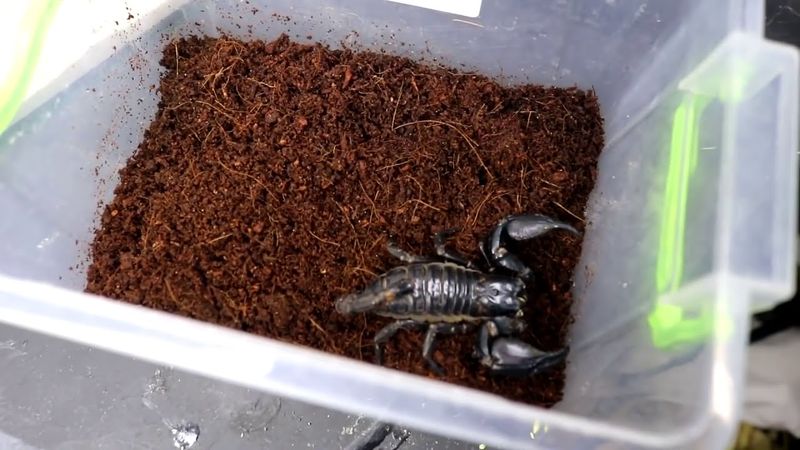
Certain tarantulas don’t shy away from taking on scorpions! Despite the dangerous stinger, these brave spiders use their size advantage and quick reflexes to overcome this armored threat.
They carefully maneuver to attack from above, avoiding the deadly tail while delivering their own venomous bite. It’s nature’s version of an ultimate heavyweight match – with dinner as the prize.
9. Pollen Surprise
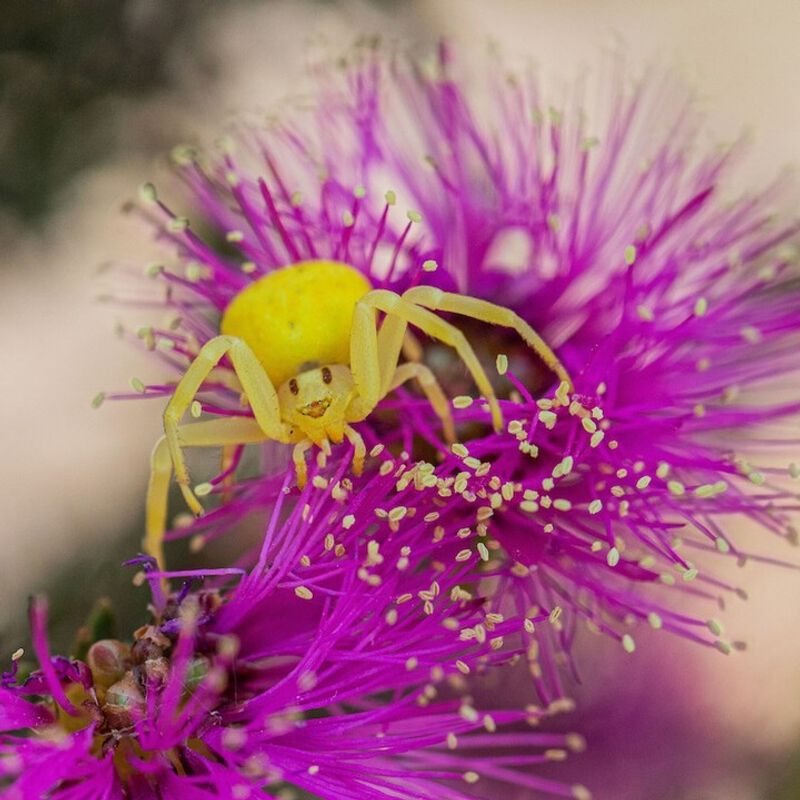
Not all spiders are strict carnivores! Researchers have discovered that some jumping spiders deliberately consume pollen as a supplement to their insect diet.
These tiny vegetarians gather the protein-rich powder from flowers while hunting. They’re basically having a side salad with their bug main course – proving that even predators enjoy a balanced diet!
10. Frog Takedown
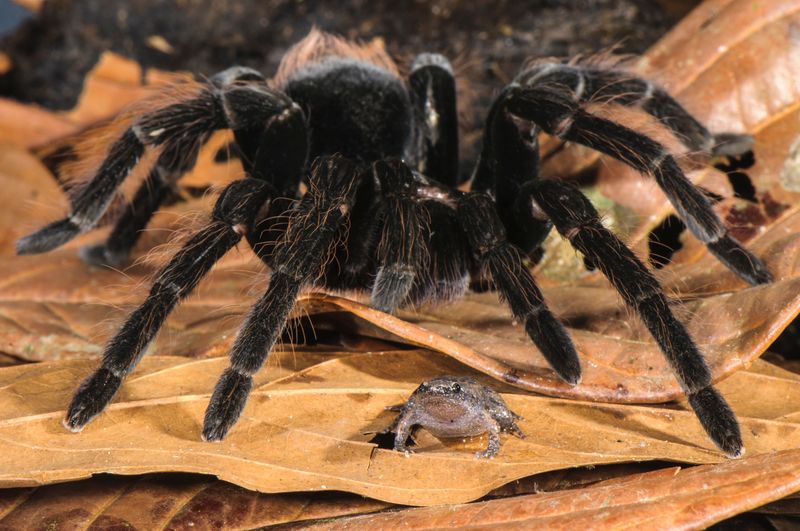
Massive fishing spiders and tarantulas can overpower small frogs despite being outweighed by their amphibian prey. Their hunting strategy relies on lightning-fast attacks and powerful venom.
When a frog wanders too close to their hiding spot, these spiders pounce, delivering a paralyzing bite. The tables turn quickly as the would-be predator becomes prey in this swamp showdown.
11. Nectar Nibbling
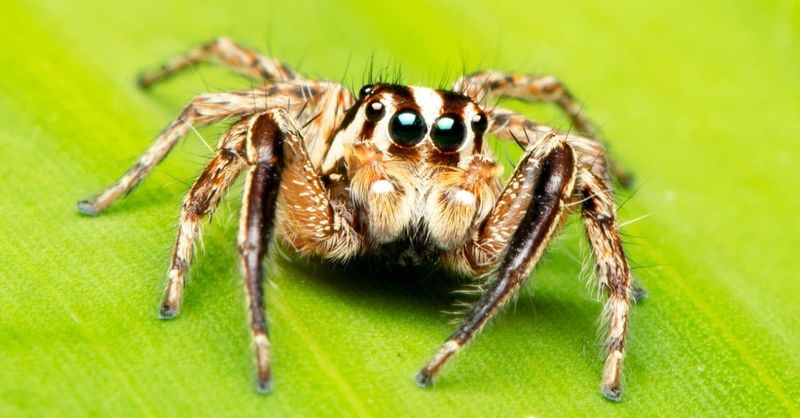
Sweet tooth alert! Certain tropical jumping spiders regularly drink flower nectar as part of their diet. They’ve even evolved specialized mouthparts for sipping these sugary treats.
These spiders visit flowers like tiny hummingbirds, drinking up for quick energy between hunts. Some species get up to 30% of their nutrition from these plant-based sugar rushes!
12. Ant Armies
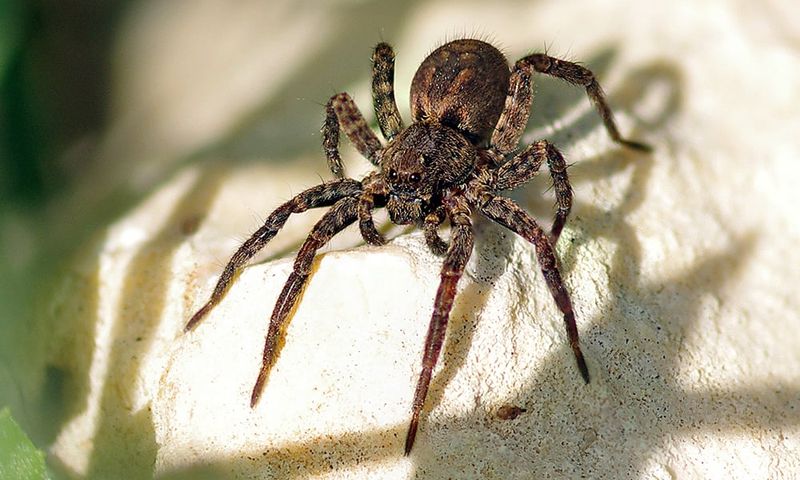
Zodarion spiders specialize in hunting one of nature’s most dangerous prey – ants! These tiny assassins have evolved chemical armor that makes them invisible to their victims.
They stalk ant trails, snatch workers, and drag them away before the colony can respond. What makes this remarkable is that ants typically overwhelm and devour most small predators through sheer numbers.
13. Millipede Munchies
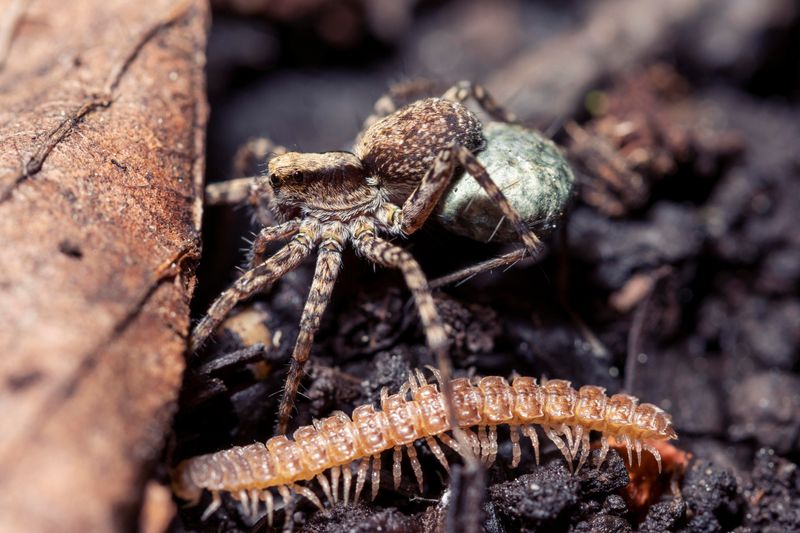
Toxic millipedes seem like terrible meal choices with their chemical defenses, but some spiders have cracked this armored code! Certain ground spiders have immunity to millipede toxins.
It’s like having the superpower to eat something poisonous to everyone else – a special adaptation for a specialized diet.
14. Blood Meal
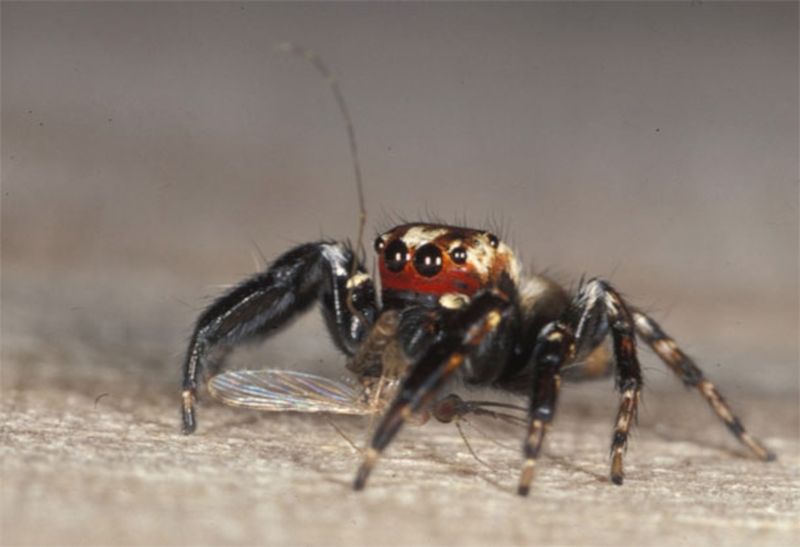
Jumping spiders in East Africa have been observed drinking blood from sleeping cattle! These tiny vampires target wounds or areas where biting flies have already broken the skin.
They don’t actually pierce hide themselves but opportunistically sip blood that’s already accessible. This bizarre behavior shows how adaptable spiders can be when seeking nutrients in challenging environments.
15. Vegetable Variety
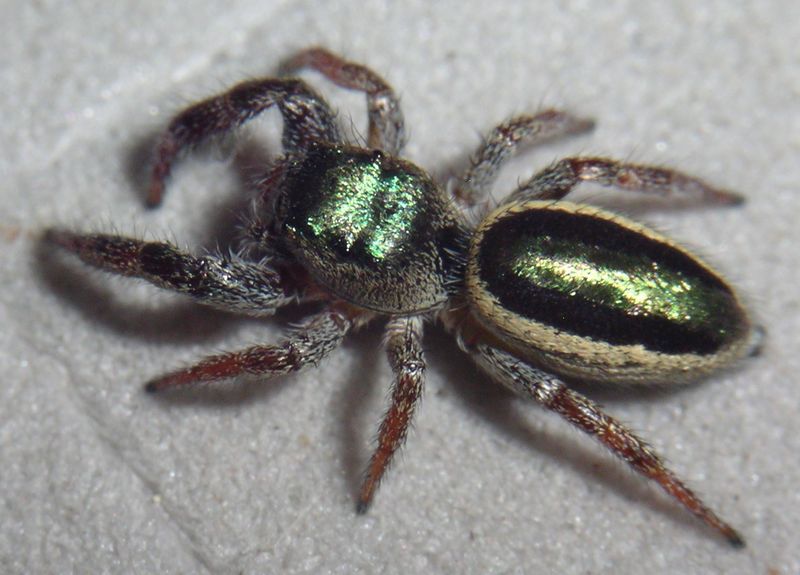
Bagheera kiplingi spiders break all the rules by being almost entirely vegetarian! These Central American oddities feast on specialized leaf tips from acacia trees.
These nutritious plant parts, called Beltian bodies, are actually produced to feed protective ants. The clever spiders steal these veggie treats right from under the ants’ antennae, making them the world’s only predominantly herbivorous spider!

